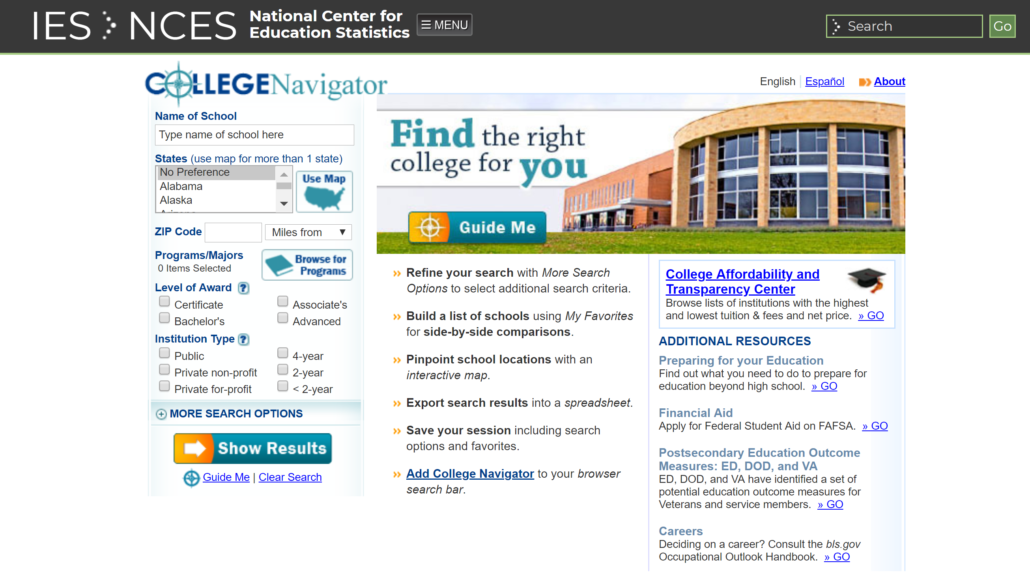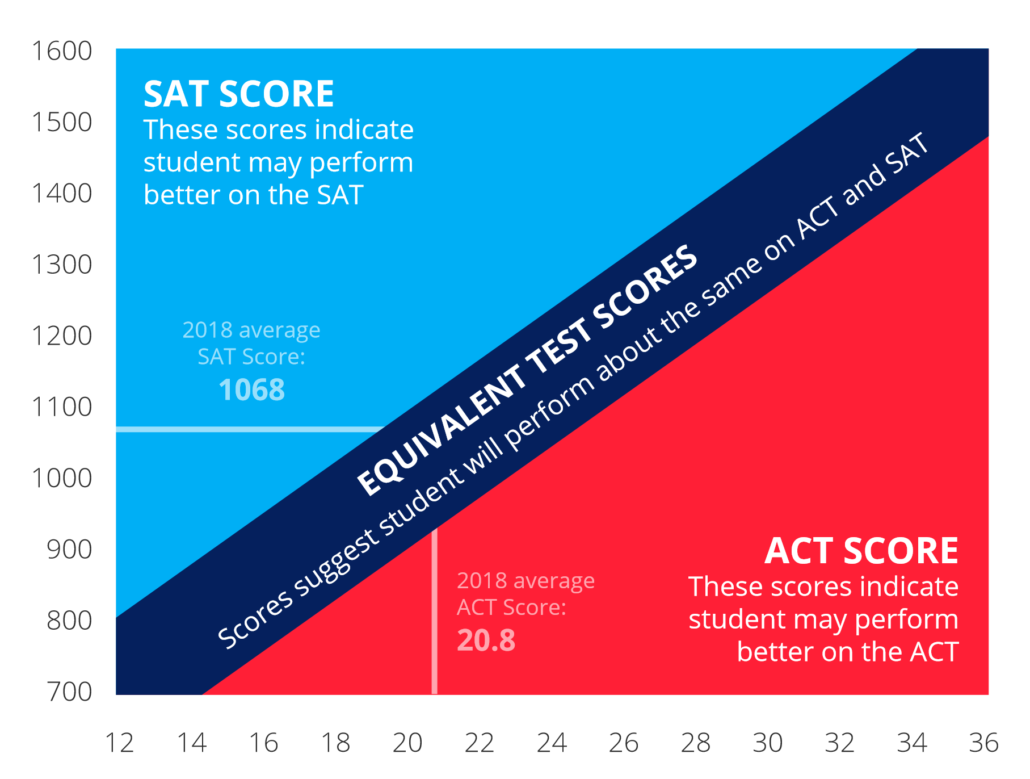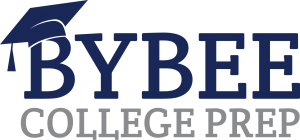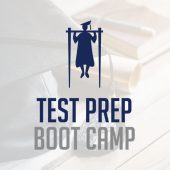The military has a saying: no plan survives first contact with the enemy. Having worked with over 1000 kids to help with test prep plans, it’s also true when it comes to figuring out what makes sense: the ideal and reality don’t usually match up.
While it might be difficult to come up with the one plan for everyone, I have been able to develop a plan that works for most students. It also gives them a framework to build their own plan around.
Step 1 – Research what schools want
Step 2 – Figure out the test that’s right for you
Step 3 – Target the right test dates
Step 4 – Plan your test prep
Step 5 – Test and Review
Repeat steps 4 and 5 as needed.
That’s the simple outline. Here are the details.
Research what schools want
 For the most up-to-date information, use College Navigator. It’s free. (Okay, it’s supported by the U.S. Department of Education, so it’s already paid for.) College Navigator stores the latest information schools submit to the Department of Education. It’s an great source for lots of information beyond just test scores. Net price calculators, retention and graduation rates, a range of search functions. But at this point, test scores are a great place to start.
For the most up-to-date information, use College Navigator. It’s free. (Okay, it’s supported by the U.S. Department of Education, so it’s already paid for.) College Navigator stores the latest information schools submit to the Department of Education. It’s an great source for lots of information beyond just test scores. Net price calculators, retention and graduation rates, a range of search functions. But at this point, test scores are a great place to start.
Your purpose for searching test scores could be for information or to compare you own scores. Completing this step gives you an idea of what kinds of scores different schools are looking for.
Figure out the test that’s right for you
Thanks to the internet, you don’t have to wait for official test dates any more. You can download an  official SAT and an official ACT, take the tests, and compare your scores. I recommend taking practice test 7 for the SAT and the official test from the ACT.
official SAT and an official ACT, take the tests, and compare your scores. I recommend taking practice test 7 for the SAT and the official test from the ACT.
Once you have your scores, compare them. You can use this handy chart we created from the 2018 concordance. Find where your SAT and ACT scores intersect. If they land in the red, focus on the ACT. If they land in the blue, focus on the SAT.
If you’re like many of the students we work with, your scores are likely to land on the dark blue line down the middle. When that happens, focus on the test you liked better (or more likely disliked less).
It’s true that the two tests have a lot of overlap. However, there are enough differences, particularly the time crunch on the ACT and the ACT Science section, that focusing on just one will help you save time in the long run.
Target the right test dates
Figure out the test dates that are right for you. The biggest question is when you take Algebra II. If it is your Sophomore year or before, plan on Fall dates for your first test. If it is the Junior year or later, plan on the Spring. You can get a detailed test prep plan from us. As a general rule, we recommend the October SAT/December ACT for Juniors taking the test for the first time in the Fall or the March SAT/April ACT for those taking the test for the first time in the Spring.
Plan your test prep
Once you know your test dates, it’s time to plan your test prep. I’ve talked about your options in more detail elsewhere. Whatever option you choose, you want to give yourself 6-9 weeks ahead of the test date to do focused preparation for the test. Test prep can be a “use it or lose it” skill, so you want to be preparing right up to a specific test date.
Test and Review
Most of students today realize that they are going to take the tests more than once. Once you get your score back, sit down with as much detail as you have available and examine the questions you missed. I like students to start with the October or March SAT or December or April ACT because those are QAS/TIR test dates. On those dates, students can request a special service that will give them access to the exact questions they missed. The student doesn’t just see that they missed number 29; they can go look and see exactly what the question was and work to see why the right answer was right.
This plan could need to be adjusted for your particular schedule. Maybe you’re in Marching Band. Even though you finished Algebra II as a Sophomore, the Fall semester won’t be practical for much preparation. Maybe you’re taking 4 AP exams in the Spring. You might not have the time to study for those tests and prepare for the May SAT.
The key is to come up with the plan that works for you and your unique circumstances. Work a QAS or TIR date into your plans to get the best information possible. And contact me if I can help.
Need a customized prep plan? Check out our test prep planning app. Answer a few critical questions and get a test prep plan that is right for you.







